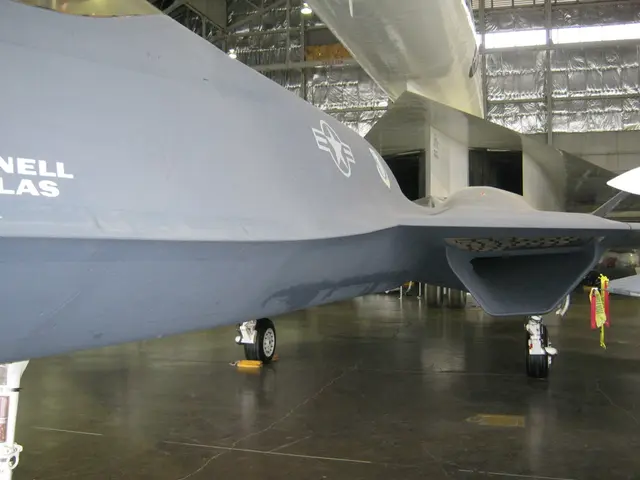Autonomous Tracking System for Aircraft in Distress: Advancement #12
The International Civil Aviation Organisation (ICAO) has mandated the Global Aeronautical Distress & Safety System (GADSS), a worldwide initiative aimed at enhancing aircraft tracking and safety following incidents where aircraft have gone missing. A key element of this framework is Autonomous Distress Tracking (ADT), which requires new-build commercial aircraft to be equipped with systems capable of automatically transmitting location information when the aircraft is in distress.
This mandate is being implemented internationally, with regulatory authorities worldwide, including India and Kiribati, actively updating their aviation regulations to align with ICAO mandates. The aviation industry, including manufacturers like Boeing, are working on certification processes for new aircraft that would include compliance with such safety mandates.
One such manufacturer, Airbus, has incorporated the ADT technology into its aircraft families. Starting from April 2023, Airbus began installing the Emergency Locator Transmitter with Distress Tracking (ELT-DT) systems into its A330neo, A350, A320, and A220 Families. By the time of writing, more than 110 Airbus aircraft had been delivered with the new ELT-DT technology.
The ELT-DT device in Airbus commercial aircraft is self-powered by its own battery and automatically broadcasts the aircraft's location and other parameters every minute via a dedicated satellite network to the operator and search-and-rescue services. If the ELT-DT cannot communicate with the rest of the aircraft, it will self-initiate its emergency broadcasting of GPS position and altitude.
The ADT element of GADSS, specifically the one-minute distress signal, was extended to comply with the mandate by the 1st January 2025. This requirement was based on data from more than 50 incidents from the French accident investigation board, the Bureau Enquête et Analyses (BEA).
The development and implementation of aircraft tracking technologies are likely being overseen by organisations such as the Airlines Electronic Engineering Committee (AEEC), Radio Technical Commission for Aeronautics (RTCA), and The European Organisation for Civil Aviation Equipment (EUROCAE). Airbus collaborated with Safran Electronics & Defense Beacons to develop the ELT-DT solution for the ADT aspect of GADSS.
Europe's National Aviation Authority, EASA, requires that each aircraft operating in European airspace should include a means for tracking in a two-phase approach: normal flight reporting at least every 15 minutes since 2018, and distress event tracking during airborne flight. The A350 received line-fit installations at the end of May, and the A320 and A220 Families received EASA certification for the ELT-DT during the summer of 2023.
In summary, the GADSS mandate for Autonomous Distress Tracking is active and being adopted globally, with new-build commercial aircraft required to carry these systems as per ICAO guidelines. This initiative is expected to significantly improve aircraft tracking and enhance safety in the aviation industry.
The aviation industry, including notable manufacturers like Airbus, are collaborating with organizations such as Safran Electronics & Defense Beacons to develop and implement new technologies to comply with the ICAO's GADSS mandate. By 2025, the aviation finance sector is anticipated to invest significantly in the installation of new Emergency Locator Transmitter with Distress Tracking (ELT-DT) systems in commercial aircraft, including Airbus' A330neo, A350, A320, and A220 Families.







